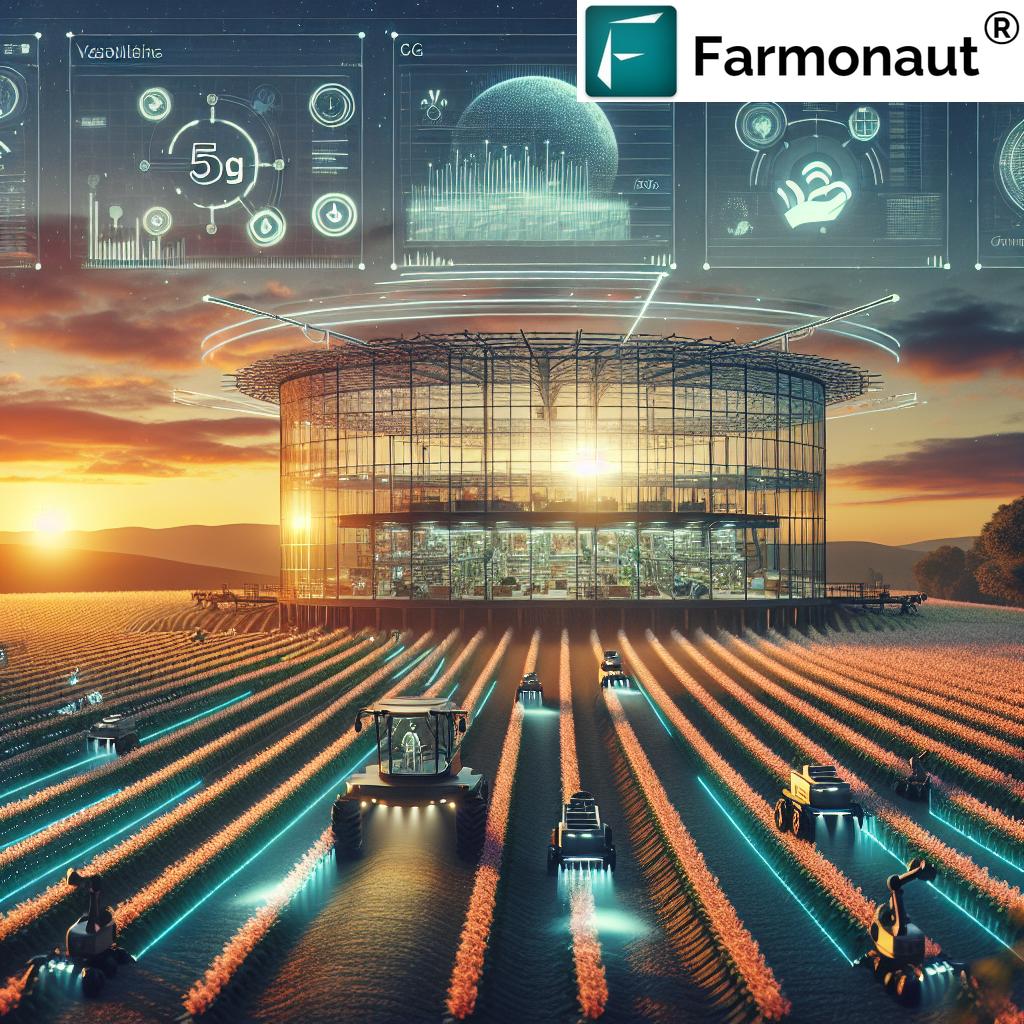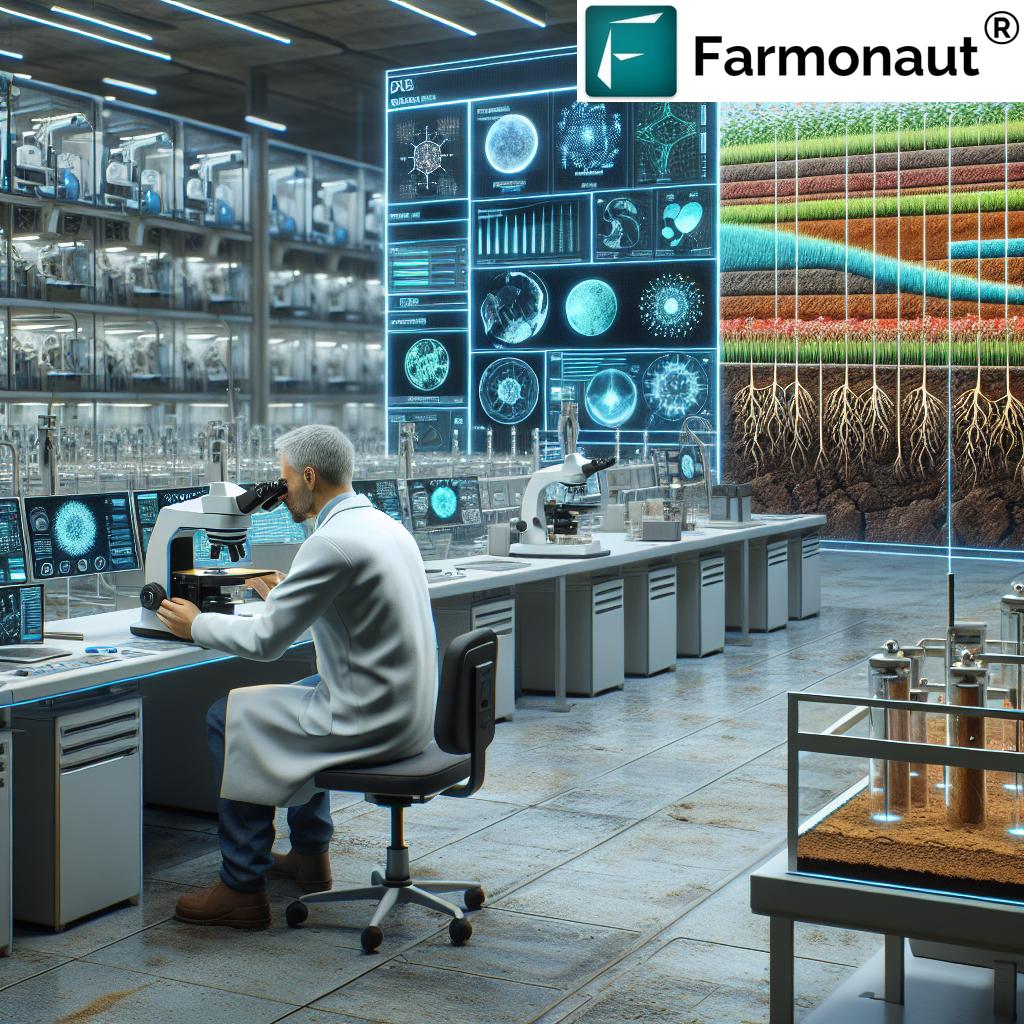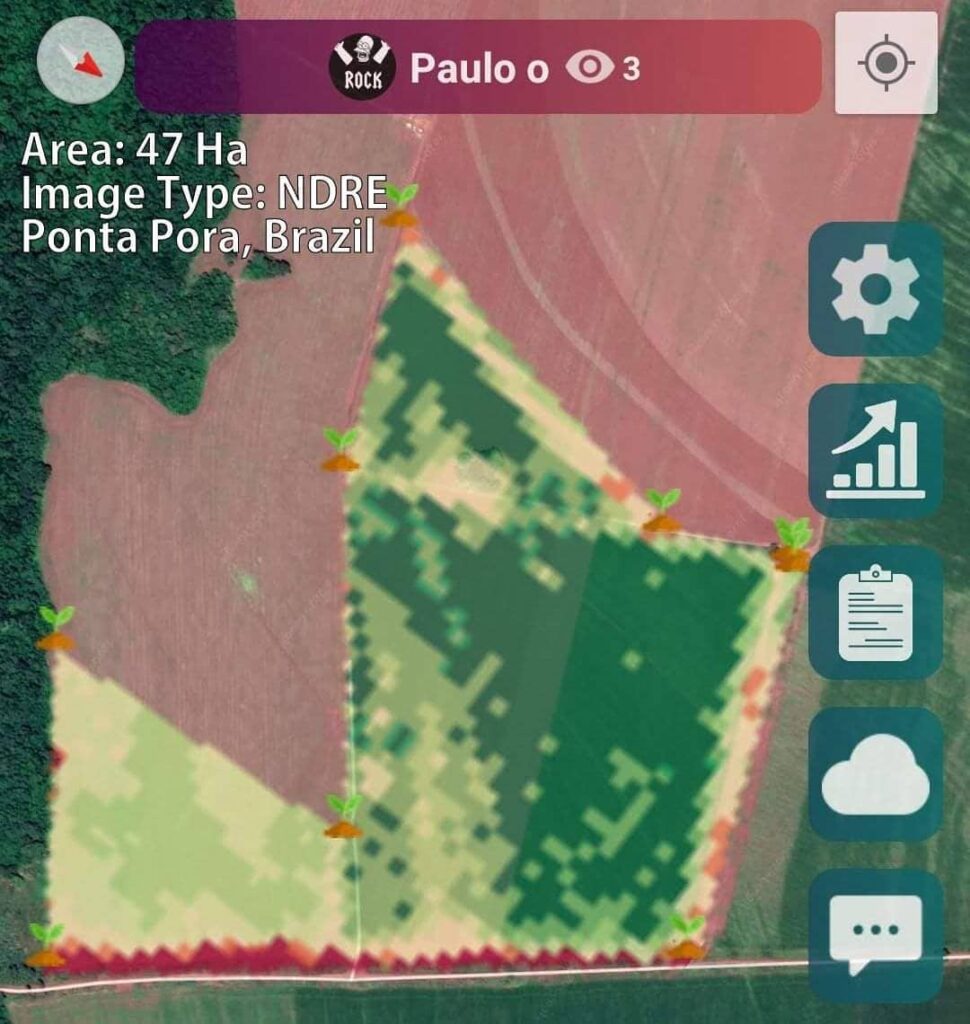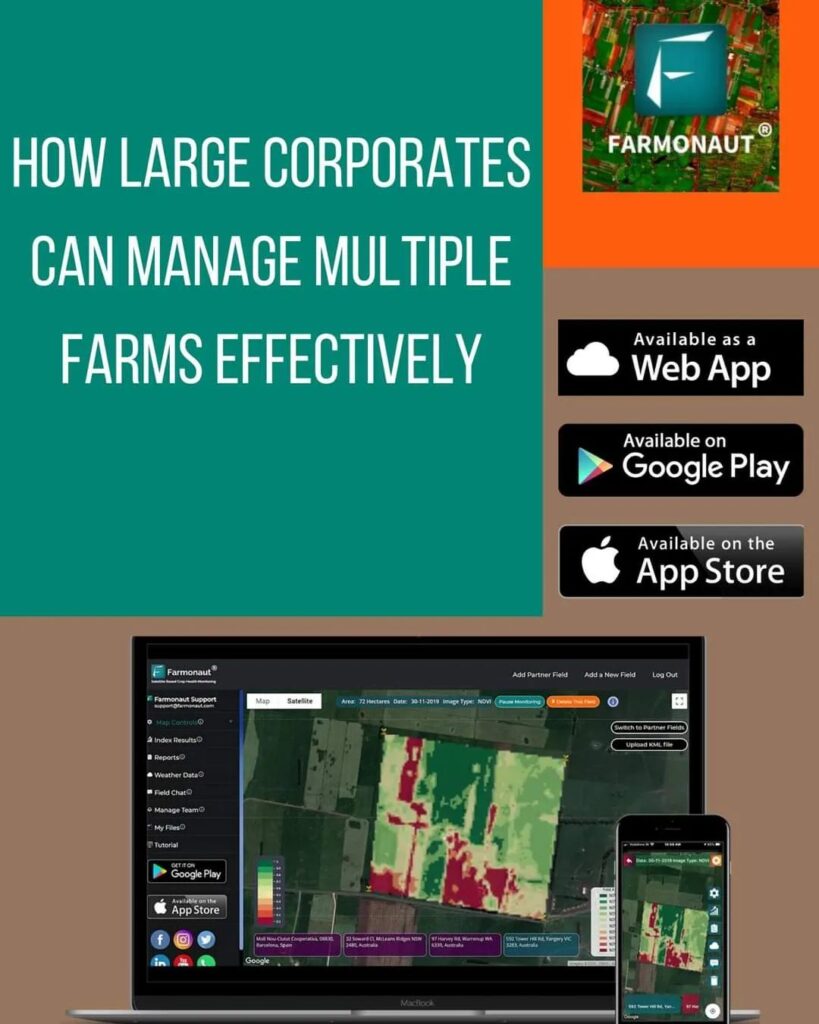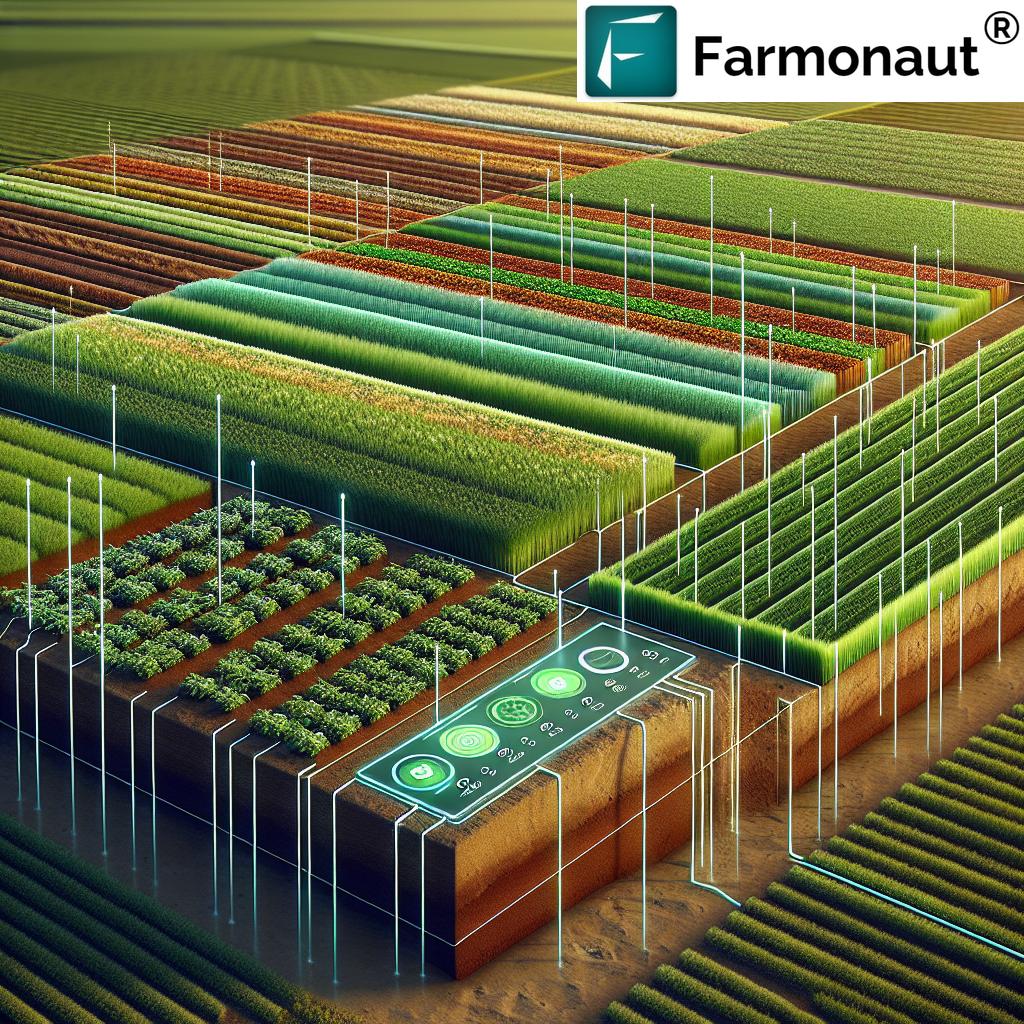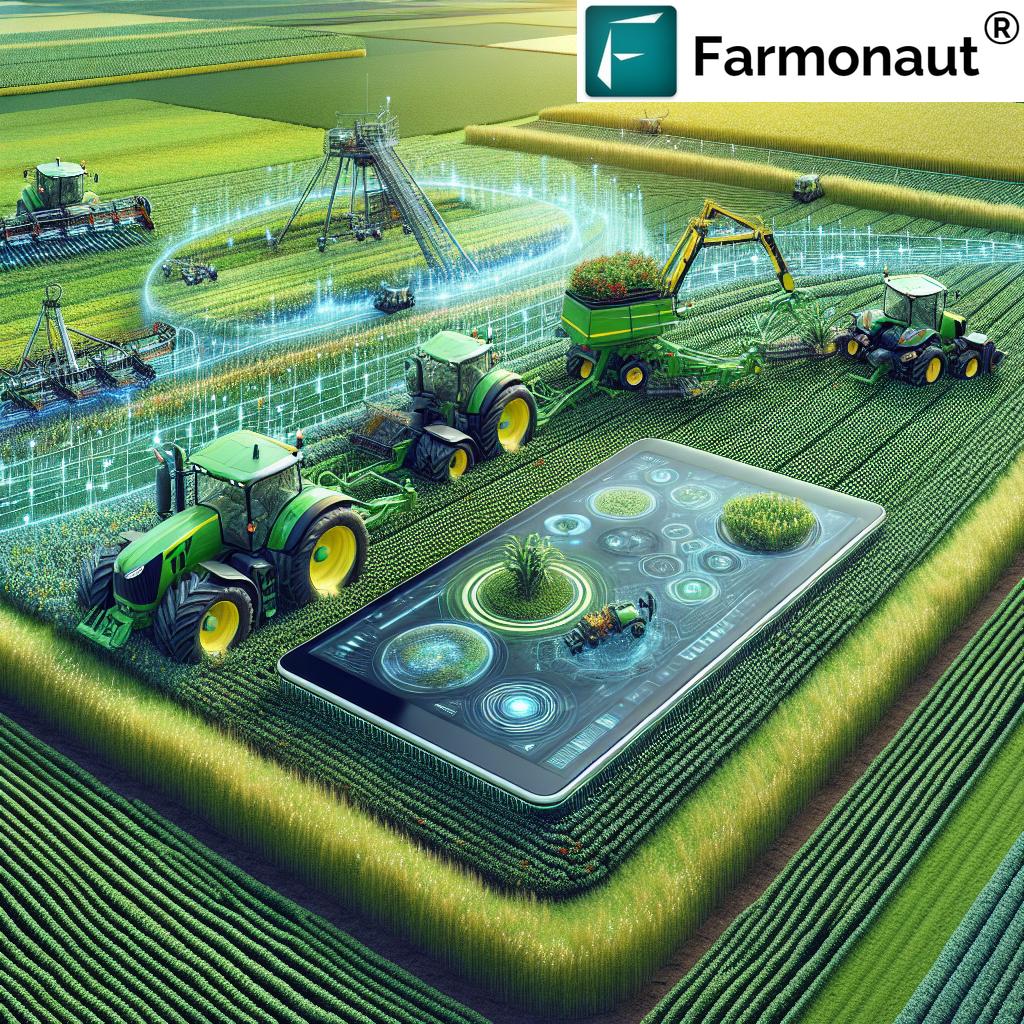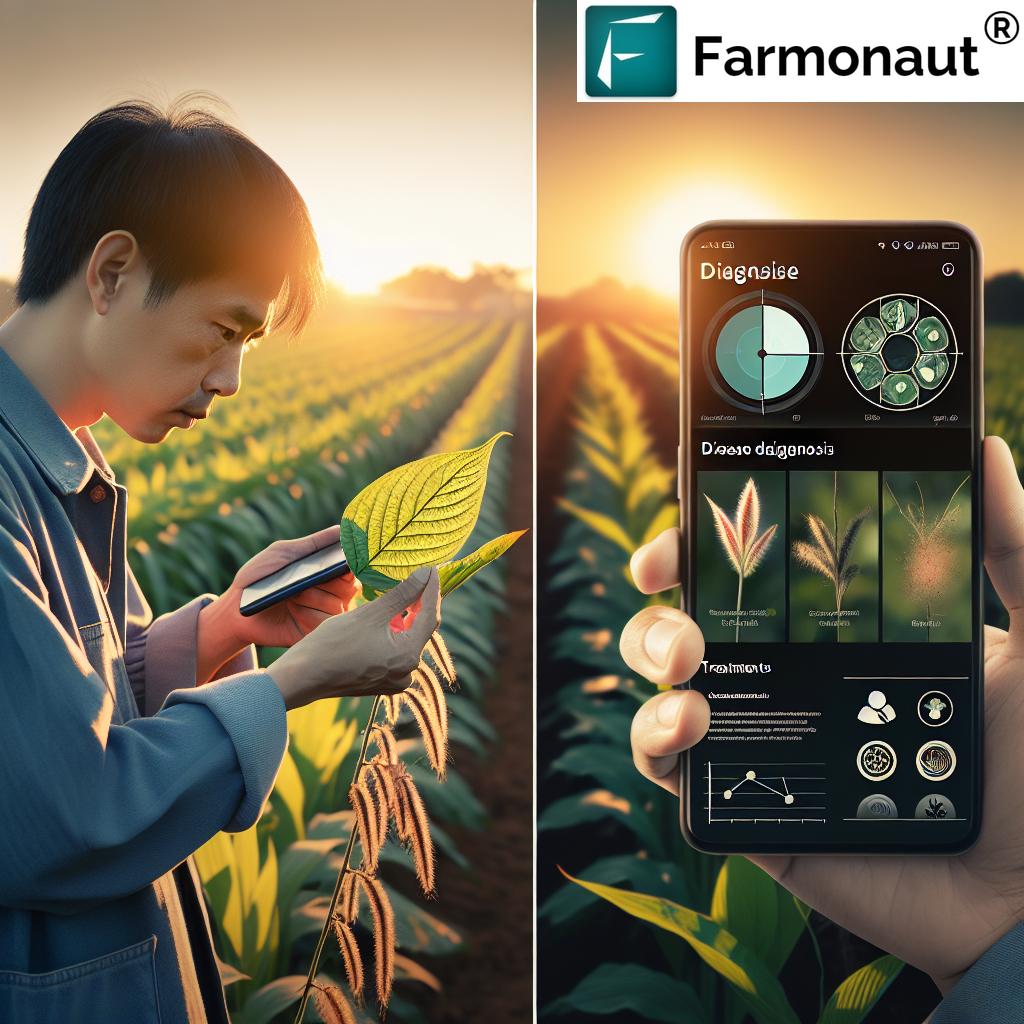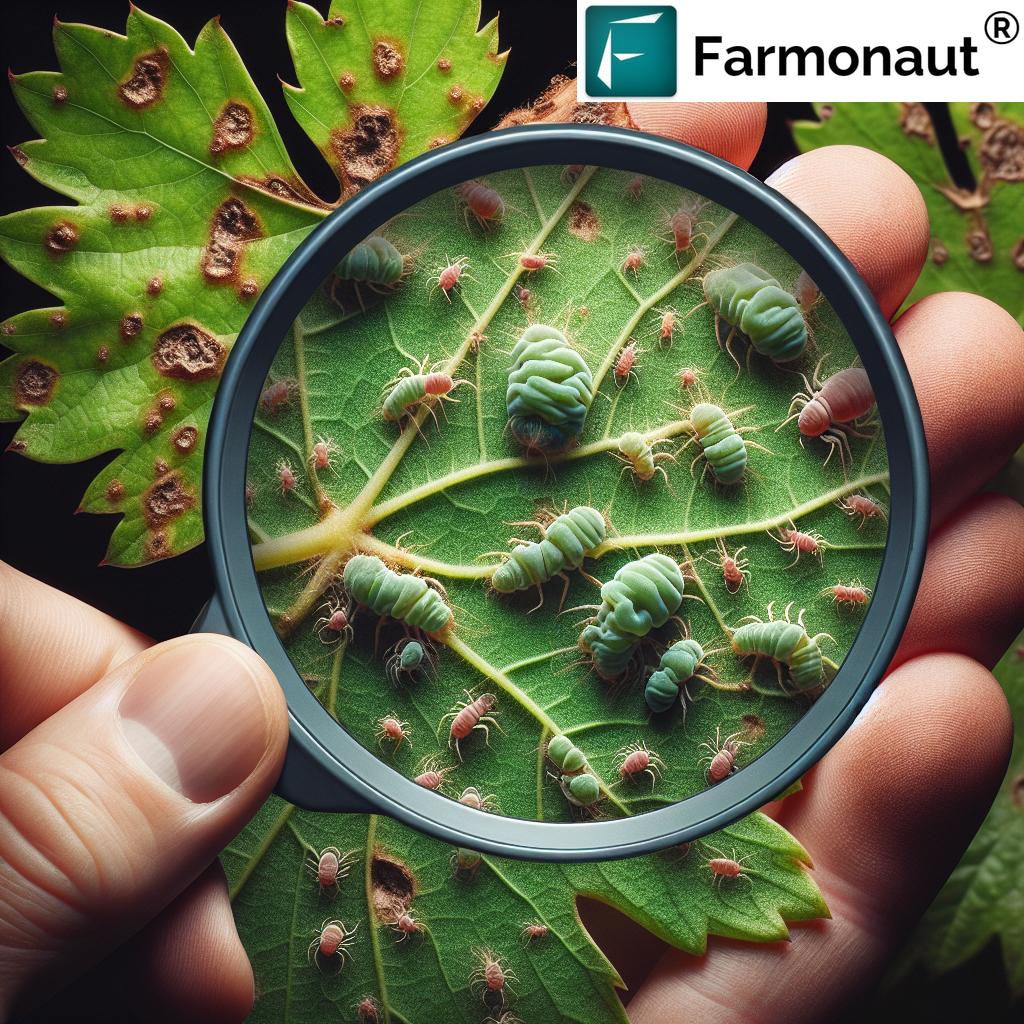Revolutionizing Agriculture: How Precision Farming and Remote Sensing are Transforming Viswamatha Farms
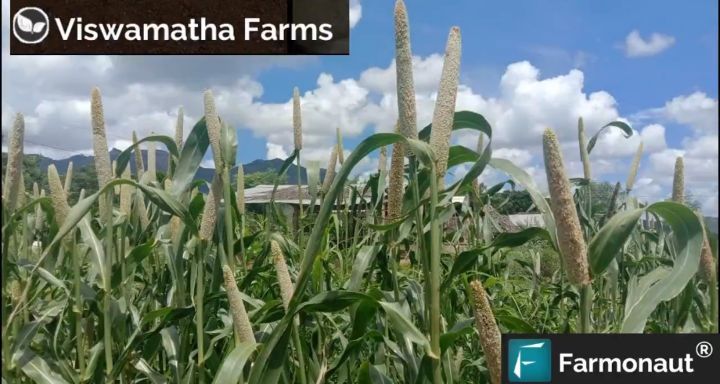
At Farmonaut, we’re passionate about revolutionizing agriculture through cutting-edge technology. Today, we’re excited to share an inspiring success story from Viswamatha Farms, located in Pedari Katla Village, Konakanametla Mandal, Prakasam District, Andhra Pradesh. This case study demonstrates how the integration of natural farming practices and precision agriculture (PA) tools can lead to remarkable results.
The Viswamatha Farms Success Story
Viswamatha Farms, situated at S No. 142/24/34A, 125-1, 126-2, has achieved impressive harvests of various crops, including:
- Black gram
- Green gram
- Sorghum
- Pearl millet
- Little millet
Additionally, their orchard crops, Aonla and Pomegranate, are also ready for harvesting this month. What sets Viswamatha Farms apart is their commitment to natural farming practices combined with the strategic use of precision agriculture tools. This powerful combination has resulted in exceptional crop yields and sustainable farming practices.
The Power of Remote Sensing in Agriculture
At the heart of Viswamatha Farms’ success lies the effective use of remote sensing technology. By leveraging satellite data provided by Farmonaut, farmers can make informed decisions that optimize their resources and improve overall farm productivity. Let’s delve into the specific benefits of using remote sensing in agriculture:
1. Reducing Chemical and Fertilizer Consumption
One of the most significant advantages of using satellite data is the ability to reduce chemical consumption. Traditional farming often relies on blanket application of fertilizers and pesticides across entire fields. However, with remote sensing technology, farmers can identify specific areas where crop health is suboptimal and apply treatments only where necessary. This targeted approach not only reduces the overall use of chemicals but also minimizes environmental impact and lowers production costs.
2. Optimizing Labor Allocation
Labor costs can be a significant expense in farming operations. By using satellite imagery to assess crop health across different areas of their fields, farmers can direct their workforce more efficiently. Instead of spreading labor resources thin across the entire farm, workers can be assigned to areas where crop health is critical, ensuring that attention is given where it’s needed most.
3. Efficient Water Management
Water scarcity is a growing concern in many agricultural regions. Remote sensing technology allows farmers to monitor plant water stress levels across their fields. With this information, irrigation can be applied precisely where needed, reducing water wastage and ensuring that crops receive optimal hydration. This not only conserves water but also prevents issues related to over-irrigation, such as nutrient leaching and root diseases.
4. Increasing Overall Yield
Perhaps the most compelling benefit of using remote sensing in agriculture is its potential to increase overall yield. By providing farmers with real-time data on crop health, soil moisture, and other critical factors, remote sensing enables more informed decision-making throughout the growing season. This leads to optimized crop management practices, resulting in higher yields and improved crop quality.
5. Maintaining Soil Health
Soil health is fundamental to sustainable agriculture. Farmonaut’s satellite data includes a Soil Organic Carbon (SOC) model that identifies areas where organic carbon levels in the soil are low. This information allows farmers to target specific locations for soil testing and implement appropriate soil management strategies. By maintaining optimal soil health, farmers can ensure long-term productivity and reduce the need for chemical inputs.
The Farmonaut Advantage: Satellite vs. Drone and IoT Monitoring
While drones and IoT devices have their place in modern agriculture, satellite-based monitoring offers several unique advantages. Here’s a comparison of Farmonaut’s satellite system with drone and IoT-based farm monitoring:
| Feature | Farmonaut Satellite System | Drone Monitoring | IoT-based Monitoring |
|---|---|---|---|
| Coverage Area | Large scale (hundreds to thousands of acres) | Limited (typically less than 100 acres per flight) | Limited by sensor placement |
| Frequency of Data Collection | Regular (every few days, depending on satellite orbit) | On-demand, but limited by battery life and regulations | Continuous, but limited to sensor locations |
| Initial Investment | Low (subscription-based service) | High (equipment purchase and training required) | Moderate to high (depends on number of sensors) |
| Maintenance | None required by the farmer | Regular maintenance and repairs needed | Periodic sensor calibration and replacement |
| Data Processing | Automated, with AI-driven insights | Often requires manual processing or additional software | Automated, but limited to sensor data points |
| Weather Independence | Can penetrate cloud cover (radar satellites) | Limited by weather conditions | Generally weather-independent |
| Scalability | Highly scalable to any farm size | Challenging for very large farms | Requires additional sensors for larger areas |
As you can see, Farmonaut’s satellite-based system offers unparalleled coverage, scalability, and ease of use compared to drone and IoT-based solutions. This makes it an ideal choice for farms of all sizes looking to implement precision agriculture practices.
The Synergy of Natural Farming and Precision Agriculture
The success of Viswamatha Farms highlights the powerful synergy between natural farming practices and precision agriculture tools. This combination offers several key benefits:
- Reduced Environmental Impact: By minimizing chemical inputs and optimizing resource use, this approach significantly reduces the environmental footprint of farming operations.
- Improved Soil Health: Natural farming practices, combined with targeted interventions based on satellite data, help maintain and improve soil health over time.
- Enhanced Crop Quality: The focus on natural methods and precise management leads to healthier crops with better nutritional profiles.
- Long-term Sustainability: By preserving soil health and reducing reliance on chemical inputs, this approach ensures the long-term viability of farming operations.
- Economic Benefits: Reduced input costs and improved yields translate to better economic outcomes for farmers.
Implementing Precision Agriculture with Farmonaut
At Farmonaut, we’re committed to making precision agriculture accessible to farmers worldwide. Our platform offers a range of tools and services designed to help farmers implement these advanced techniques easily and affordably. Here’s how you can get started:
- Sign Up for Farmonaut: Visit our website or download our mobile app to create an account. You can find our Android app here and our iOS app here.
- Define Your Farm Boundaries: Use our intuitive mapping tools to outline your farm’s boundaries.
- Access Satellite Data: Once your farm is registered, you’ll start receiving regular satellite imagery and analysis of your fields.
- Interpret the Data: Our AI-powered system will provide you with easy-to-understand insights about your crop health, soil moisture, and more.
- Take Action: Use the insights provided to make informed decisions about irrigation, fertilization, and other farm management practices.
- Track Progress: Monitor the impact of your actions over time and adjust your strategies as needed.
For developers and businesses looking to integrate our satellite data into their own systems, we offer a robust API. You can find our API documentation here.
The Future of Agriculture: Sustainable and Data-Driven
The success story of Viswamatha Farms is just one example of how precision agriculture and remote sensing are transforming the agricultural landscape. As we look to the future, we envision a world where farming is not only more productive but also more sustainable and environmentally friendly.
By combining natural farming practices with advanced technologies like satellite remote sensing, we can address many of the challenges facing modern agriculture, including:
- Climate change adaptation
- Water scarcity
- Soil degradation
- Food security
- Environmental conservation
At Farmonaut, we’re committed to driving this agricultural revolution forward. Our goal is to empower farmers with the tools and knowledge they need to succeed in an increasingly complex and challenging world.
Join the Precision Agriculture Revolution
Are you ready to take your farming operation to the next level? Join thousands of farmers who are already benefiting from Farmonaut’s satellite-based precision agriculture solutions. Whether you’re a small family farm or a large agricultural enterprise, our scalable platform has something to offer you.
Visit our website to learn more about our services and sign up for a free trial. Experience firsthand how precision agriculture and remote sensing can transform your farm’s productivity and sustainability.
Frequently Asked Questions (FAQ)
Here are some common questions about precision agriculture and Farmonaut’s services:
Q: What is precision agriculture?
A: Precision agriculture is a farming management concept that uses technology to observe, measure, and respond to variability in crops. It aims to optimize returns on inputs while preserving resources, leading to more efficient and sustainable farming practices.
Q: How does remote sensing work in agriculture?
A: Remote sensing in agriculture involves collecting data about crops and soil from a distance, typically using satellites or drones. These systems capture multispectral images that can be analyzed to provide insights into crop health, soil moisture, and other important factors.
Q: What is the organic carbon formula, and why is it important?
A: The organic carbon formula is a method used to calculate the amount of organic carbon in soil. It’s important because organic carbon is a key indicator of soil health and fertility. Higher levels of organic carbon generally indicate better soil structure, water retention, and nutrient availability for plants.
Q: How can precision agriculture help reduce chemical consumption?
A: Precision agriculture allows farmers to apply chemicals only where and when they’re needed, based on detailed data about crop health and soil conditions. This targeted approach can significantly reduce overall chemical usage compared to traditional blanket application methods.
Q: Can precision agriculture really increase overall yield?
A: Yes, precision agriculture has been shown to increase overall yield in many cases. By optimizing inputs like water, fertilizer, and pesticides, and by addressing issues promptly, farmers can create ideal growing conditions that lead to higher yields and better crop quality.
Q: Is Farmonaut’s system suitable for small farms?
A: Absolutely! Farmonaut’s satellite-based system is scalable and can be used effectively on farms of all sizes. Our goal is to make precision agriculture accessible to farmers worldwide, regardless of their operation’s scale.
Q: How often is satellite data updated?
A: The frequency of satellite data updates depends on the specific satellite and your subscription plan. Typically, we provide updates every few days, allowing for regular monitoring of crop conditions throughout the growing season.
Q: Do I need special equipment to use Farmonaut’s services?
A: No special equipment is required. All you need is a smartphone or computer with internet access to view your farm data and insights through our web platform or mobile app.
Q: Can Farmonaut’s system work with all types of crops?
A: Our system is designed to work with a wide variety of crops, including grains, fruits, vegetables, and cash crops. The satellite imagery and analysis can provide valuable insights for most types of agricultural production.
Q: How does Farmonaut support sustainable farming practices?
A: Farmonaut supports sustainable farming by helping farmers optimize their resource use, reduce chemical inputs, and maintain soil health. Our system encourages practices that are both environmentally friendly and economically viable for long-term agricultural sustainability.
We hope this FAQ section has answered some of your questions about precision agriculture and Farmonaut’s services. If you have any further questions, please don’t hesitate to contact our support team at support@farmonaut.com or +91-6366026267.
Conclusion: Embracing the Future of Farming
The success of Viswamatha Farms demonstrates the immense potential of combining natural farming practices with precision agriculture tools. By leveraging remote sensing technology and data-driven insights, farmers can significantly reduce their environmental impact while improving yields and ensuring long-term sustainability.
At Farmonaut, we’re proud to be at the forefront of this agricultural revolution. Our satellite-based monitoring system offers farmers an accessible and affordable way to implement precision agriculture techniques on their farms, regardless of size or location.
As we look to the future, we envision a world where farming is not only more productive but also more in harmony with nature. By embracing technologies like remote sensing and precision agriculture, we can address the global challenges of food security and environmental conservation simultaneously.
We invite you to join us on this exciting journey towards a more sustainable and prosperous agricultural future. Whether you’re a small family farm or a large agribusiness, Farmonaut has the tools and expertise to help you succeed in the evolving world of modern agriculture.
Ready to transform your farming practices? Visit our website today to learn more about our services and start your precision agriculture journey. Together, we can cultivate a brighter future for farming and our planet.


